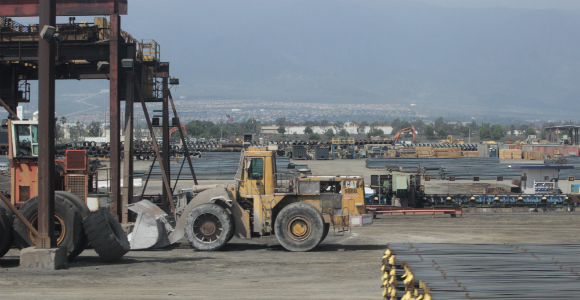
San Bernardino, CA (Photo Credit: mknmv/Flickr)
As we have been reporting for months, the economic recovery in California has been uneven. The San Francisco Bay Area, Orange County and San Diego County have been doing better than many other regions.
Now optimism is surfacing in one of the areas of California has notably lagged–the Inland Empire of Riverside and San Bernardino Counties.
Redlands-based economist John Husing, who is one of our favorites for his plain speaking style, told a crowd of business and local leaders in the IE that he expects the region’s economy to add another 40,000 jobs this year–citing health care and logistics as the drivers that growth.
“We haven’t had positive news in a long time, and I think what Husing is saying is that we’re going to increase job creation and that the economy of the Inland Empire is looking up,” said Paul Granillo, president and CEO of the Inland Empire Economic Partnership. “That’s the message for today.”
Granillo, co-chair of the California Economic Summit, last year warned about the problem of “two Californias” with an affluent state based around the coastal regions and a state lagging behind, mostly made of inland areas (including the large Inland Empire).
In the latest California jobs numbers for March, it looks like the momentum is swinging in the right direction. Riverside and San Bernardino counties combined added 3,000 jobs, and their jobless rate was unchanged at a combined 9.4 percent.
Statewide, California added 11,800 jobs, which kept the unemployment rate static at 8.1 percent. But what was hopeful is that nearly 50,000 Californias entered (or re-entered) the workforce in March, a sign of growing confidence in the economy.
Another note in the California numbers that was interesting was a sizeable increase in construction labor, thanks to increased housing and commercial construction in Southern California.
But even with that, there was some troubling news from homebuilders. The National Association of Home Builders says that it’s facing a shortage of qualified workers–both craft professionals and laborers in several sections of the country.
The skills gap is not limited to home building of course. Aligning a trained workforce with the needs of a 21st-century economy is a priority of the California Economic Summit–which is timely. Workforce preparation is a hot issue. Expect it to stay that way. It is estimated that three million jobs are waiting to be filled.

